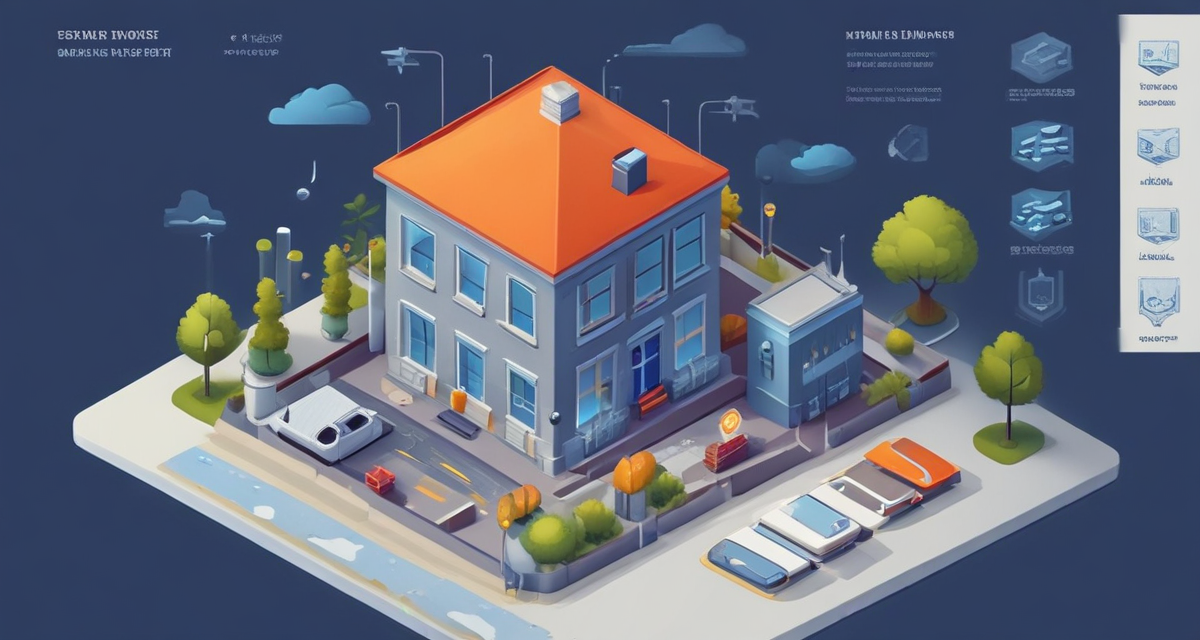Optimizing images is a crucial step in enhancing your website’s SEO.
Proper image optimization improves loading speed, user experience, and search engine rankings. This article explains the basics and advanced techniques for image SEO, helping you avoid common pitfalls and measure success.
In this article, you will learn:
- Essential steps for image optimization
- Advanced techniques to boost image SEO
- How to measure the success of your efforts
Understanding the Basics of Image Optimization
Optimizing images for SEO can seem daunting, but it’s a crucial step in enhancing your online presence. Whether you’re running an e-commerce site or a blog, mastering the basics of image optimization is essential.
Understanding the fundamentals of image optimization can significantly improve your website’s SEO.
First off, let’s talk about why image optimization matters. Properly optimized images can improve your site’s loading speed, enhance user experience, and boost your search engine rankings. These factors combined can lead to more web traffic and better
engagement.
Why Image Optimization is Important
Images are often the heaviest elements on a webpage. If they’re not optimized, they can slow down your site, which can negatively impact your SEO.
- Faster Loading Times: Optimized images load faster, reducing bounce rates.
- Better User Experience: High-quality images that load quickly improve user satisfaction.
- Improved SEO: Search engines favor fast-loading, user-friendly sites.
Basic Steps to Optimize Images
Here are some basic steps to get you started:
- Choose the Right Format: Use JPEGs for photos and PNGs for graphics.
- Resize Images: Ensure your images are the correct dimensions for your site.
- Compress Images: Use tools like TinyPNG to reduce file size without losing quality.
- Use Descriptive File Names: Name your files with relevant keywords.
- Add Alt Text: Describe the image in the alt text for better accessibility and SEO.
By following these steps, you can make sure your images are working for you, not against you.
Best Practices for SEO-Friendly Images
When it comes to optimizing images for SEO, adhering to best practices is essential. These practices ensure that your images not only look good but also contribute significantly to your website’s overall SEO performance. Let’s dive into the key strategies that can make your images SEO-friendly.
The right image optimization can make a substantial difference in your website’s search engine ranking and user
engagement.

Choose the Right File Format
Picking the right file format is crucial. JPEGs are generally better for photographs due to their balance of quality and file size. PNGs are preferable for images that require transparency or those with text and graphics. Understanding when to use each format can significantly affect your site’s load time and visual quality.
Resize and Compress Images
Large image files can slow down your site, impacting both user experience and SEO. Use tools like TinyPNG or ImageOptim to compress your images without losing quality. Also, resize images to fit the specific dimensions required by your website layout.
Descriptive File Names and Alt Text
Search engines can’t ‘see’ images, but they can read file names and alt text. Use descriptive, keyword-rich file names and alt text to help search engines understand the content of your images. For example, instead of naming a file IMG_1234.jpg, use blue-widget.jpg.
Utilize Image Sitemaps
Image sitemaps provide search engines with additional information about the images on your website. This can help improve your images’ visibility in search engine results. Ensure your sitemap is up-to-date and includes all the relevant images.
Responsive Images
In today’s mobile-first world, responsive images are a must. Use the <picture> and <srcset> attributes to serve different image sizes to different devices. This ensures a fast loading time and a better user experience on both desktop and mobile devices.
Leverage Lazy Loading
Lazy loading defers the loading of images until they are needed, which can significantly speed up page load times. This practice not only enhances user experience but also positively impacts your SEO.
Implement Structured Data
Structured data can help search engines better understand your images. Use schema markup to provide additional details about your images, such as captions and licensing information.
Monitor and Test
Regularly monitor your site’s performance and conduct A/B tests to see which image optimization techniques yield the best results. Tools like Google Analytics and Search Console can provide valuable insights into how your images are performing.
Advanced Techniques for Image SEO
When it comes to image SEO, mastering advanced techniques can give your website a competitive edge. These methods go beyond the basics and delve into more sophisticated strategies that enhance visibility and engagement.
Advanced image SEO techniques can significantly improve your website’s search engine ranking and user experience.

One advanced technique is utilizing image
sitemaps. These sitemaps help search engines discover and index images on your site more efficiently. By including important metadata, you ensure that your images are properly indexed and appear in search results.
Leveraging Structured Data
Structured data can be a game-changer for image SEO. By adding schema markup to your images, you provide search engines with detailed information about the content of your images. This can lead to better indexing and potentially higher rankings in image search results.
For example, if you run an e-commerce site, adding structured data to your product images can help them appear in rich snippets, enhancing their visibility and click-through rates.
Implementing Lazy Loading
Lazy loading is another advanced technique that can improve your site’s performance and user experience. This method delays the loading of images until they are about to enter the viewport. It can significantly reduce initial load time and save bandwidth.
To implement lazy loading, you can use the
loading="lazy" attribute in your <img> tags. This simple addition can make a big difference in how quickly your pages load, especially on mobile devices.
Optimizing for Featured Snippets
Featured snippets are a coveted spot in search results. To optimize your images for featured snippets, ensure they are high-quality, relevant, and paired with concise, informative text. Answering common questions related to your images can increase the chances of your content being featured.
- Use high-resolution images that are clear and visually appealing.
- Include descriptive alt text that accurately reflects the image content.
- Pair images with well-written, concise text that answers user queries.
Utilizing Image Compression Tools
Advanced image compression tools can further reduce file sizes without compromising quality. Tools like TinyPNG or ImageOptim offer powerful compression algorithms that maintain image clarity while minimizing load times.
Regularly compressing your images ensures that your site remains fast and efficient, providing a better user experience and potentially improving your search engine rankings.
Monitoring and Adjusting
Finally, it’s important to continuously monitor the performance of your optimized images. Use tools like Google Analytics and Google Search Console to track metrics such as image load times,
click-through rates, and search rankings. Adjust your strategies based on this data to achieve optimal results.
Advanced image SEO techniques require a strategic approach and ongoing effort. By implementing these methods, you can enhance your website’s performance and visibility, driving more traffic and engagement.
Common Pitfalls to Avoid in Image Optimization
When it comes to image optimization for SEO, there are several common pitfalls that can undermine your efforts. Avoiding these mistakes is essential for maintaining a high-performing website.
“Avoiding common pitfalls in image optimization is crucial for maintaining a high-performing website.”

One of the most common mistakes is neglecting to compress images. Large images can slow down your website, leading to a poor user experience and lower search engine rankings. Always use tools like TinyPNG or JPEG-Optimizer to reduce file sizes without compromising quality.
Ignoring Alt Text
Another frequent error is ignoring alt text. Alt text not only improves accessibility for users with visual impairments but also helps search engines understand the content of your images. Make sure to include descriptive, keyword-rich alt text for all images.
Using Non-Descriptive File Names
Using non-descriptive file names is another pitfall. File names like ‘IMG_1234.jpg’ don’t provide any context to search engines. Instead, use descriptive names like ‘blue-widget-2024.jpg’ to help search engines index your images better.
Not Utilizing Image Sitemaps
Many businesses overlook the importance of image sitemaps. Image sitemaps help search engines discover all the images on your site, which can improve your image search rankings. Make sure to include all important images in your sitemap.
Forgetting About Mobile Optimization
Forgetting about mobile optimization is a critical mistake. Ensure that your images are responsive and load correctly on all devices. This not only enhances user experience but also boosts your SEO performance.
Not Leveraging Structured Data
Finally, not leveraging structured data can be a missed
opportunity. Structured data provides additional information to search engines, helping them understand the context of your images. Implementing structured data can improve your chances of appearing in rich search results.
By avoiding these common pitfalls, you can significantly improve your image SEO and overall website performance.
Measuring Success in Image SEO
Once you’ve implemented various image optimization techniques, it’s essential to measure their effectiveness. Evaluating the success of your image SEO efforts helps you understand what’s working and what needs improvement.
Measuring the success of image SEO is crucial for continuous improvement and achieving better rankings.

To gauge your success, start by monitoring key performance indicators (KPIs) such as:
- Organic traffic: Track the increase in visitors coming from search engines.
- Page load time: Ensure images are not slowing down your site.
- Engagement metrics: Look at bounce rates, time on page, and click-through rates.
- Image search rankings: Check where your images appear in search results.
- Backlinks: Evaluate the number of backlinks generated from image content.
Using Analytics Tools
Google Analytics and other SEO tools can provide valuable insights. For instance, Google Search Console offers data on how your images perform in search results. Additionally, tools like SEMrush and Ahrefs can help track image-specific metrics and overall site
performance.
Here are some steps to follow:
- Set up Google Analytics and Google Search Console.
- Use the “Performance” report in Search Console to track image search queries.
- Analyze “Site Speed” reports in Google Analytics to monitor load times.
- Utilize third-party tools like SEMrush for detailed image SEO analysis.
Interpreting Data and Making Adjustments
After gathering data, it’s crucial to interpret it correctly. Look for patterns and trends. For example, if your images have high bounce rates, consider improving their relevance and quality. If load times are slow, further compress your images or use a content delivery network (CDN).
Regularly updating your image SEO strategy based on data ensures continuous improvement. The ultimate goal is to enhance user experience and achieve higher search engine rankings.
HiBrand.art has extensive experience in optimizing images for SEO, ensuring that your visuals not only look great but also perform exceptionally well in search engines.
Leveraging HiBrand.art for Optimal Results
Optimizing images for your website can feel overwhelming, but with HiBrand.art, you’re in good hands. Our platform simplifies image optimization, ensuring your website not only looks stunning but also performs exceptionally well in search rankings. Let’s dive into how HiBrand.art can make a difference:
1. Automated Compression: Our tools automatically compress your images without losing quality, speeding up your site.
2. Smart Resizing: HiBrand.art ensures your images are perfectly sized for different devices, enhancing user
experience.
3. Descriptive File Names and Alt Text: We help you generate SEO-friendly file names and alt text, improving your search visibility.
But that’s not all. HiBrand.art also offers features like image sitemaps and lazy loading. These advanced techniques ensure your images load efficiently and are easily discovered by search
engines.
By leveraging HiBrand.art, you’re not just enhancing your website’s aesthetics—you’re also boosting its performance and SEO. Don’t let poorly optimized images hold you back. Partner with HiBrand.art and watch your web traffic soar.
Ready to transform your website? Get started with HiBrand.art today and experience the difference expert image optimization can make!




